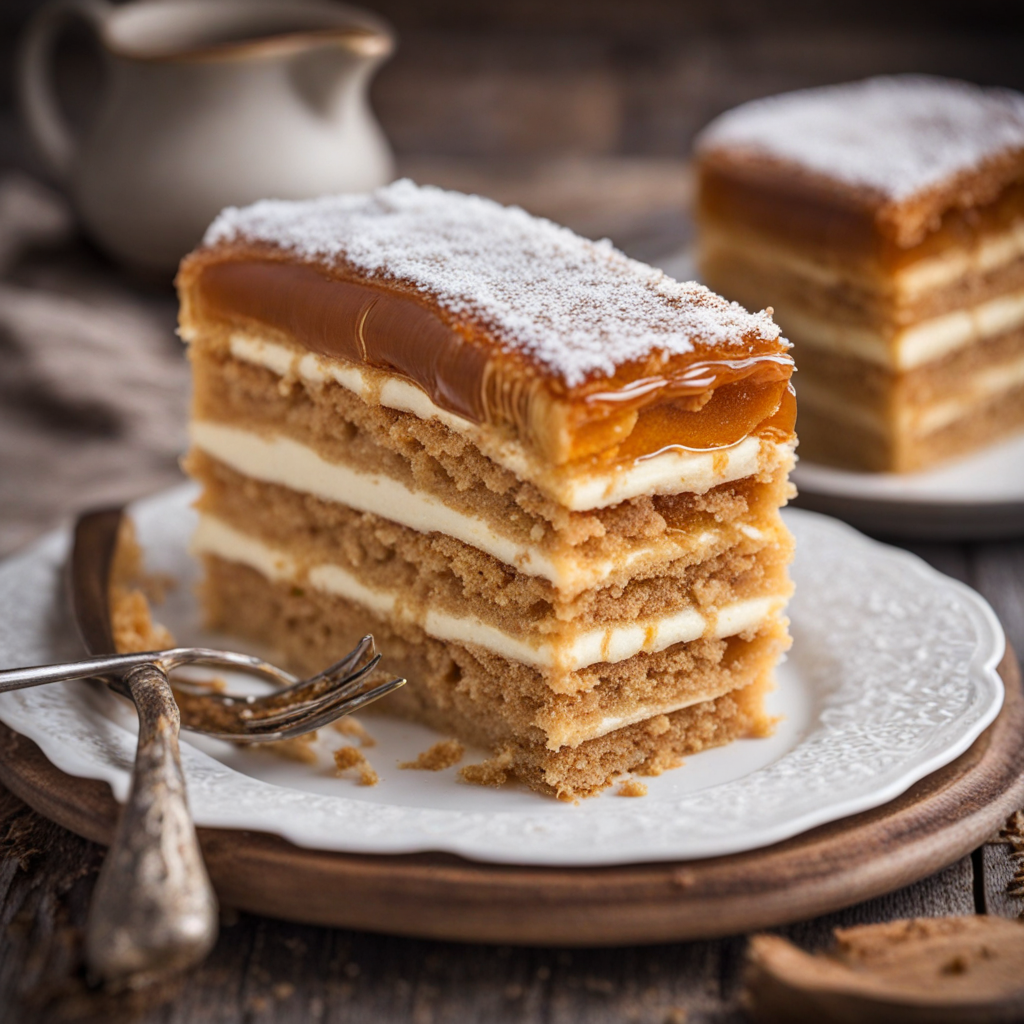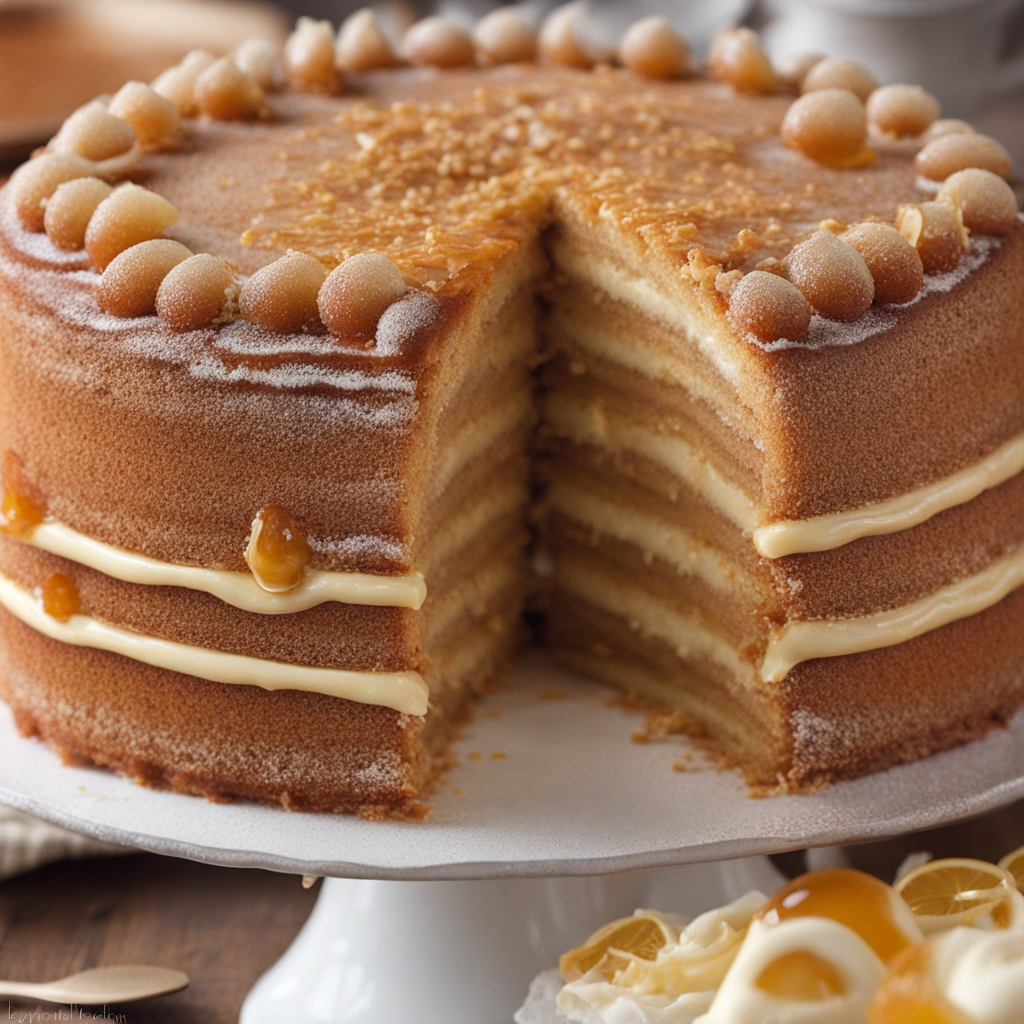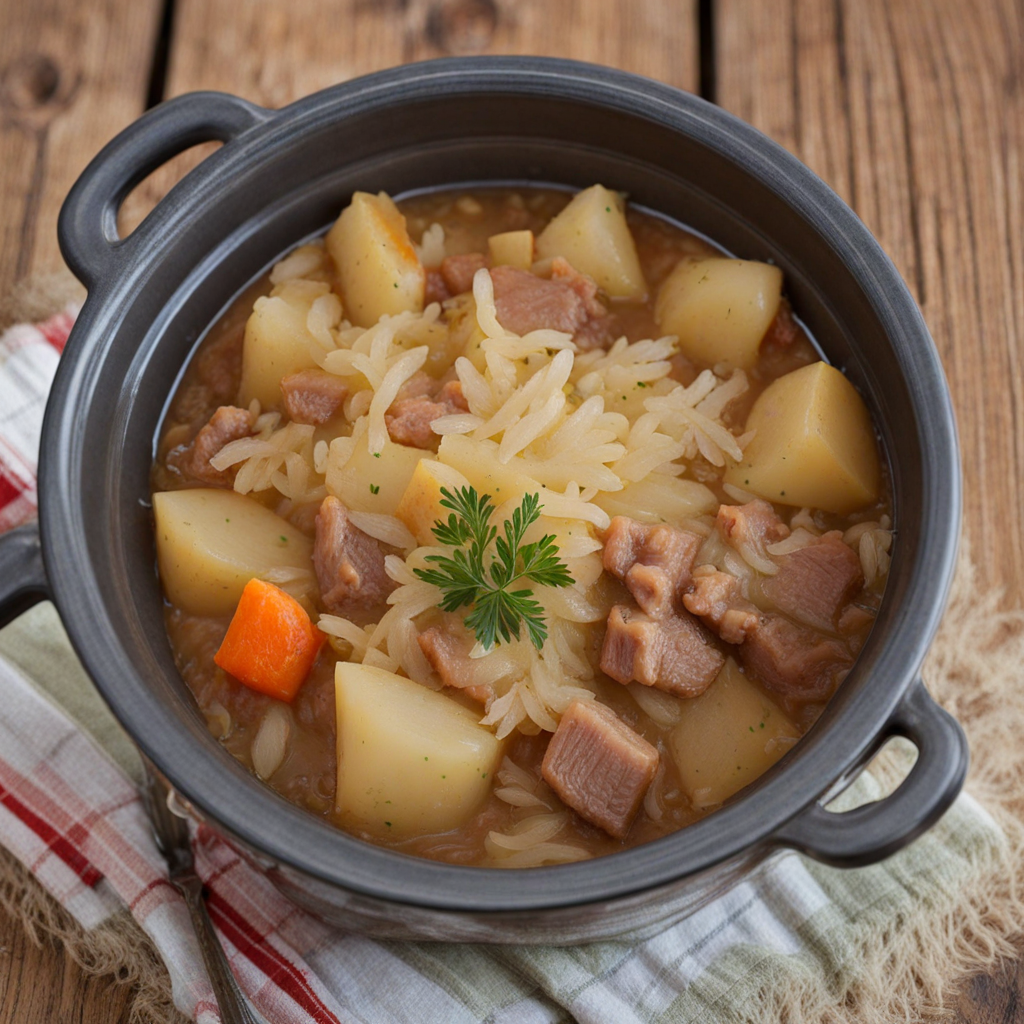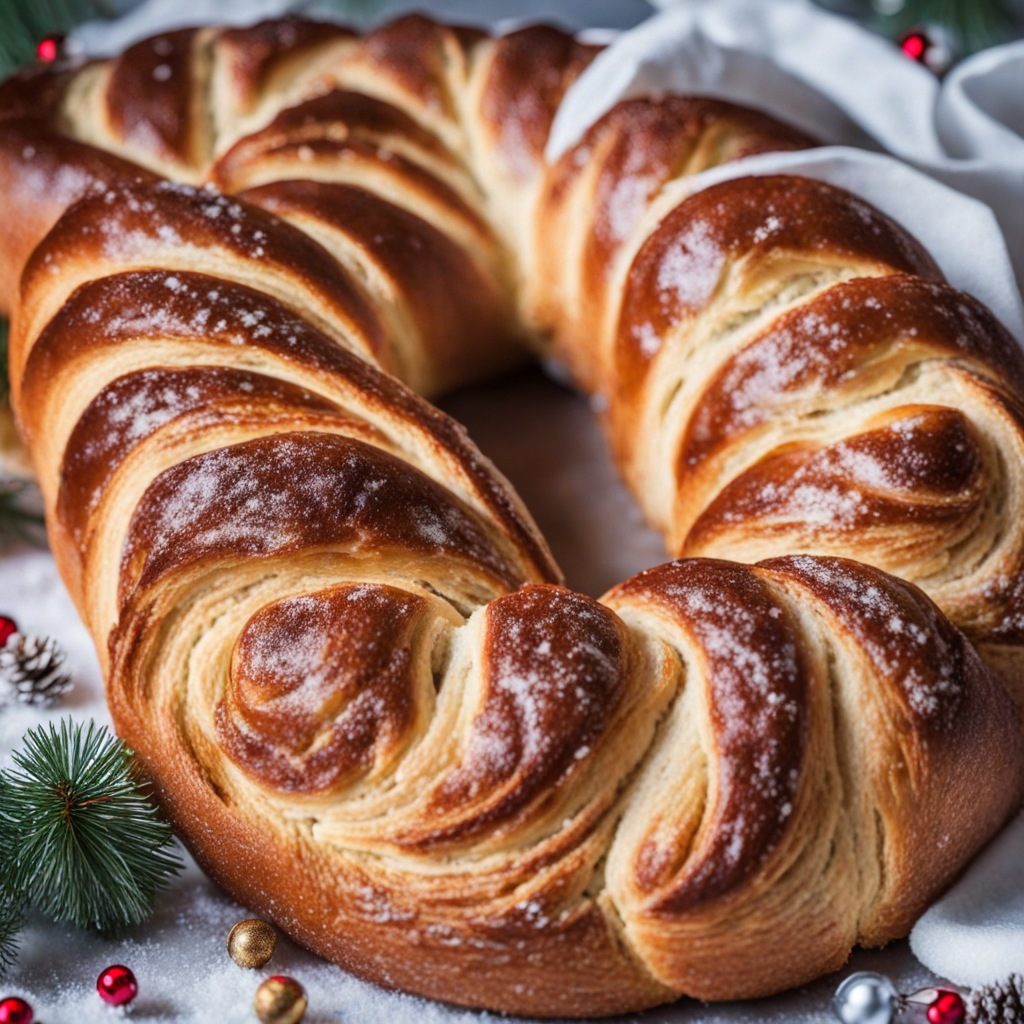Honey Cake
Honey Cake, known as "Kohupiimakook" in Estonia, is a delightful dessert that embodies the rich culinary traditions of the region. This cake features layers of moist honey-flavored sponge cake, which are often infused with a hint of cinnamon and nutmeg, providing a warm and comforting spice that perfectly complements the natural sweetness of honey. The cake is typically assembled with a creamy filling made from quark cheese, a staple in Estonian cooking, which adds a luscious texture and a slight tanginess that balances the sweetness of the honey. The combination of flavors creates a harmonious experience that is both rich and refreshing. The visual presentation of Honey Cake is as inviting as its taste, often adorned with a dusting of powdered sugar or a drizzle of honey on top, making it a stunning centerpiece for any gathering. Additionally, some variations of the cake incorporate crushed nuts or sweet dried fruits, introducing a delightful crunch and extra layers of flavor. When sliced, the cake reveals its beautiful, layered structure, showcasing the contrasting textures of the fluffy sponge and the creamy filling, inviting you to indulge in a slice. Enjoyed year-round, Honey Cake holds a special place in Estonian celebrations, from birthdays to holidays. Each bite offers a taste of Estonia's rich natural bounty, with honey sourced from local beekeepers and fresh ingredients that reflect the changing seasons. Whether paired with a cup of coffee or served as a dessert after a hearty meal, Honey Cake is a treat that invites exploration and appreciation of Estonian culinary heritage.
How It Became This Dish
Mesikäpp: A Sweet Journey Through Estonian Tradition #### Origins of Mesikäpp Mesikäpp, a traditional Estonian delicacy, translates to "bear cub" in English, a term that evokes imagery of the wild, lush landscapes of Estonia. Although the exact origins of Mesikäpp are somewhat murky, it is widely believed to date back to the agrarian societies of Estonia, where honey was a cherished resource. The word "mesikäpp" captures the essence of the dish: it combines the sweetness of honey with the richness of other ingredients, often giving it a unique flavor profile. In the early days, honey was not only a sweetener but also a vital part of the Estonian diet. Its significance is intertwined with the local flora and fauna, as bees thrived in the forests, contributing to the natural bounty of the land. Mesikäpp is often made using honey, flour, and a variety of nuts and spices, reflecting the ingredients that were readily available to rural families. The dish was likely created as a way to preserve honey and utilize grains, ensuring food security during the long Estonian winters. #### Cultural Significance Mesikäpp holds deep cultural significance in Estonia, serving not just as a dish, but as a symbol of the connection to nature and the changing seasons. Traditionally, it is enjoyed during festive occasions and family gatherings, especially in autumn, when the harvest is celebrated. The preparation of Mesikäpp often involves the participation of family members, reinforcing familial ties and communal bonds. The Estonian tradition of foraging and using local ingredients is proudly reflected in Mesikäpp. The dish embodies the ethos of sustainable living, where nothing goes to waste, and every ingredient is utilized to its fullest potential. This connection to the land and the customs surrounding its culinary practices are integral to Estonian identity. The communal aspect of preparing Mesikäpp is also significant; it is often made for special occasions, such as weddings or harvest festivals, where its sweet flavor serves to enhance the festive atmosphere. Development Over Time As Estonia moved through various historical phases—from its agrarian roots to its place in the modern European landscape—the recipe and significance of Mesikäpp have evolved. During the Soviet era, when Estonia was under foreign rule, many traditional recipes, including Mesikäpp, faced the threat of extinction. The availability of ingredients fluctuated, and the focus on state-controlled food production often overshadowed local culinary traditions. However, even during this time, Estonians maintained their culinary practices in their homes, ensuring that the legacy of Mesikäpp endured. After Estonia regained independence in 1991, there was a cultural renaissance that saw a revival of interest in traditional foods. Chefs and home cooks alike began to experiment with Mesikäpp, adding contemporary twists while still respecting its origins. Some modern variations of Mesikäpp incorporate seasonal fruits, such as berries, or even chocolate, catering to a younger audience while keeping the essence of the dish intact. Moreover, as Estonia has embraced its identity in the European Union, food tourism has become a growing industry. Mesikäpp has found its way onto menus in restaurants that celebrate local cuisine, often served alongside other traditional Estonian dishes. This broader exposure has rekindled interest in the history of Mesikäpp, prompting culinary enthusiasts to explore its roots and variations. Ingredients and Preparation While variations of Mesikäpp exist, the traditional recipe typically includes honey, flour (often rye), nuts such as hazelnuts or walnuts, and spices like cinnamon or ginger. The combination creates a dense, cake-like texture that is both nourishing and satisfying. The preparation of Mesikäpp is an art form in itself. The ingredients are meticulously mixed, and the dough is often shaped into small cakes or bars. Traditionally, the cakes are baked until golden brown, creating a delightful crust that encapsulates the soft, sweet interior. Once cooled, Mesikäpp can be dusted with powdered sugar or drizzled with additional honey, elevating its sweetness and visual appeal. In folklore, Mesikäpp is sometimes linked to the idea of "bear's magic," where the bear is seen as a symbol of strength and resilience. This connection further adds to the dish's charm, as it is believed that sharing Mesikäpp with loved ones brings good fortune and warmth. Contemporary Relevance Today, Mesikäpp serves as a culinary emblem of Estonia, a nation rich in traditions and natural beauty. Its presence in food festivals, local markets, and restaurants highlights the importance of preserving culinary heritage. The dish also resonates with the growing trend of using local ingredients and promoting sustainability in modern cooking. In recent years, Estonian chefs have taken Mesikäpp to new heights, incorporating modern cooking techniques and pairing it with innovative flavors. The dish is often featured in Michelin-starred restaurants, where chefs honor its traditional roots while presenting it in a contemporary light. Additionally, the rise of social media has allowed Mesikäpp to transcend geographical boundaries. Cooking enthusiasts from around the world have discovered the dish through platforms like Instagram and Pinterest, leading to a broader appreciation of Estonian cuisine. This newfound interest has spurred local artisans to produce high-quality honey and other ingredients, further supporting the local economy and fostering a sense of pride in Estonian culinary traditions. Conclusion Mesikäpp is more than just a sweet treat; it is a testament to the resilience of Estonian culture and the enduring connection between people, nature, and food. Its journey from humble origins to modern culinary significance illustrates the importance of preserving traditions while embracing innovation. As Estonia continues to navigate its place in the global culinary scene, Mesikäpp stands as a delicious reminder of the country’s rich heritage, inviting everyone to experience the sweet embrace of its history and flavor. Whether enjoyed during a festive occasion or a quiet family gathering, Mesikäpp remains a beloved dish, reflecting the heart and soul of Estonia.
You may like
Discover local flavors from Estonia







